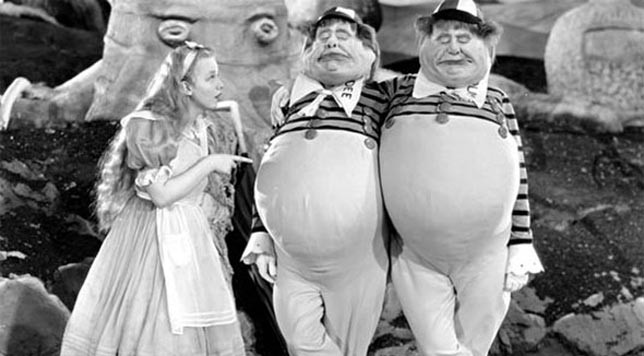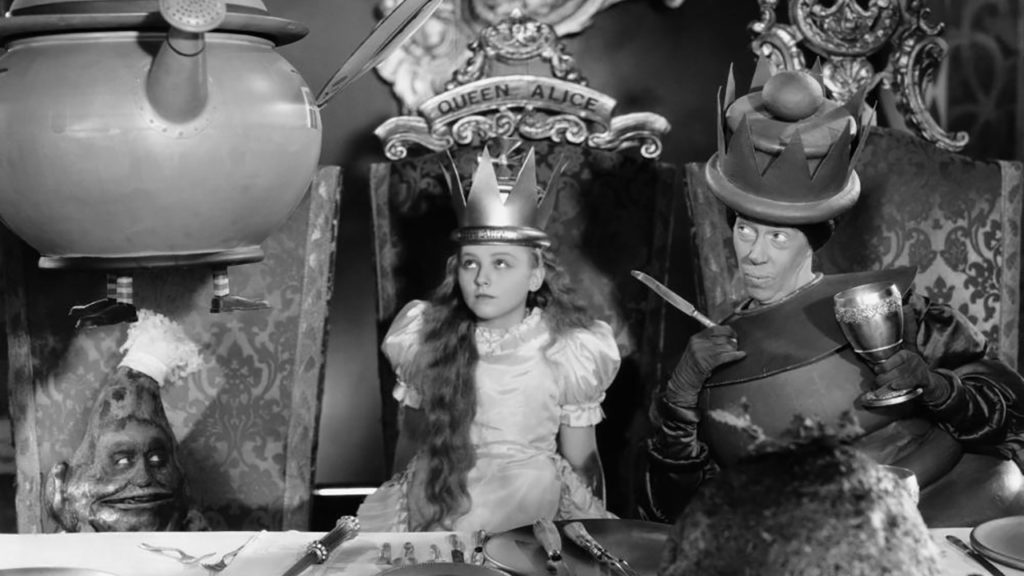A Star-Studded Journey Through Lewis Carrol’s Classic
DIrected by Norman McLeod / 1933
Blu-Ray Street Date May 19, 2020
Kino Lorber Studio Classics
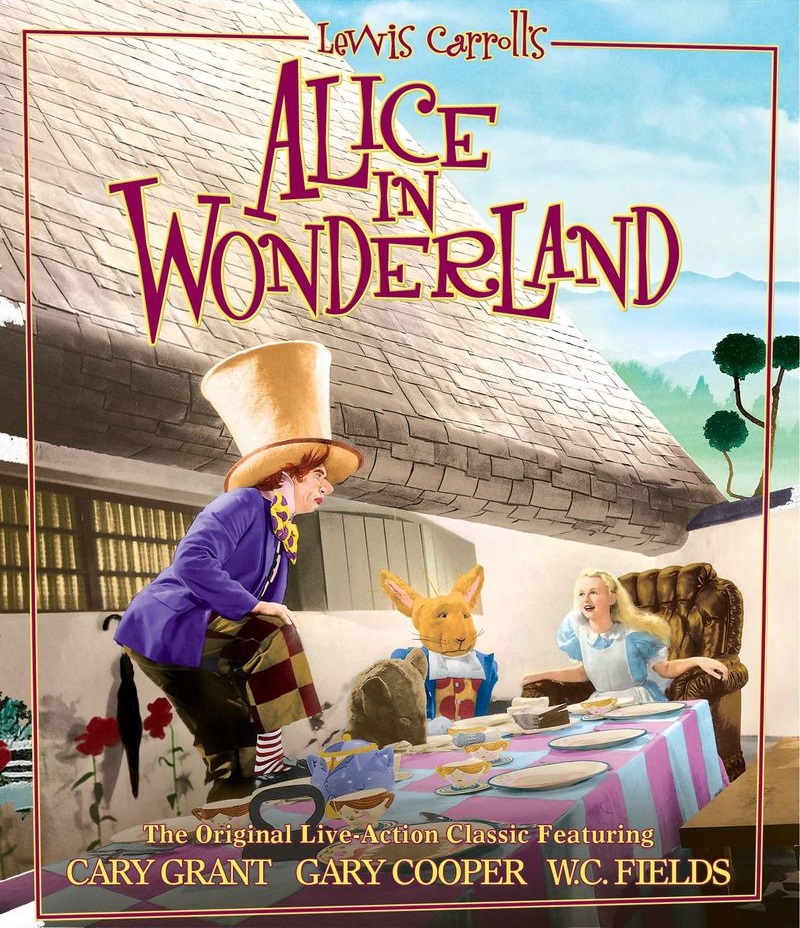
1933’s Alice in Wonderland is a movie that just gets curiouser and curiouser as it goes. It’s a live-action adaptation of Carrol’s classic book, the fourth such adaptation since the invention of film, and the second one made in the 30’s alone. It boasts impressive visual effects and fantastic set design, yet its costuming and makeup effects are… questionable. It features a ton of big name actors, many of whom are still famous today- and buries most of them beneath aforementioned costumes. It seeks whimsy, yet frequently approaches horror. It’s a mere 77 minutes long, yet drags. As a film I can’t recommend it, but as an artifact from the golden age of Hollywood? Well worth seeking out.
Charlotte Henry plays the young Alice. There’s a terrible snowstorm, and she’s stuck inside, bored out of her skull. Her attempts to escape via her imagination are met with stern rebukes from her stern governess, so there’s nothing left for Alice to do, but fall asleep in a comfy chair. She then dreams of passing through a mirror into the ‘looking glass world,’ where everything starts out backwards and just grows stranger from there.
Even folks with only a knowledge of the story gleaned via cultural osmosis (like *ahem* yours truly) will recognize much of what happens next. Alice journeys through Wonderland, frequently changing size and running into a motley of strange and terrible characters.
Paramount threw everything it had at this movie. Their entire roster of stars were cast in it, even if it meant most of them ended up being unrecognizable. Would you know that was Cary Freakin’ Grant under that Mock Turtle costume if the opening credits didn’t tell you? (Gary Cooper’s quiet dignity and W.C. Field’s cynicism both shine through their respective get-ups, and it’s not hard to pick them out).
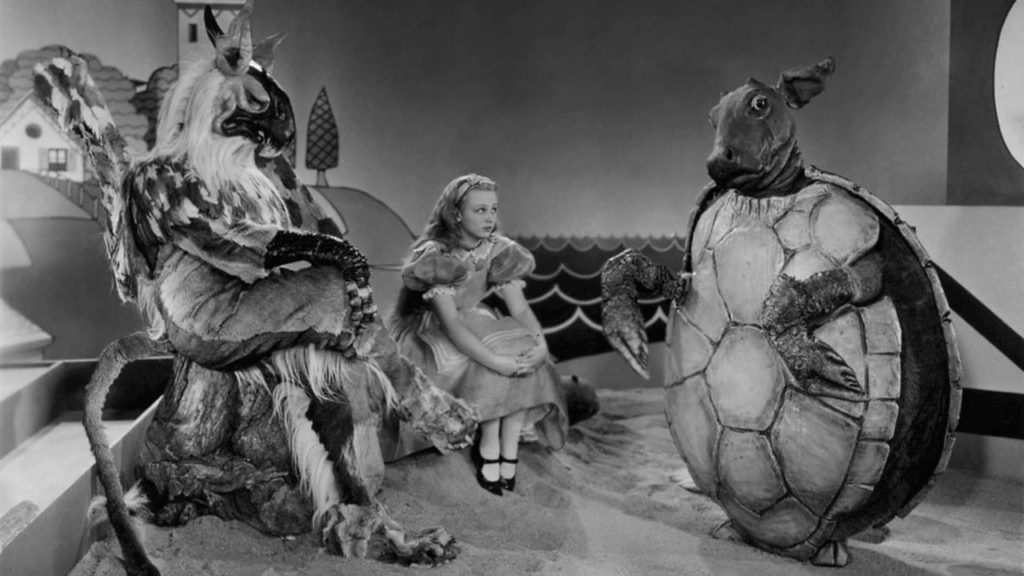
Nevertheless, for all of Paramount’s efforts, the movie ended up being a flop at the box office, and critics of the time were not kind to it. The studio’s takeaway was that audiences don’t respond to fantasy films. Watching it today, it’s easy to see that the problems were not with fantasy. In just a few short years, MGM would put that to rest with The Wizard of Oz. It’s just that this movie’s specific implementation of “whimsy” doesn’t work. And it all comes down to the story that it tells.
The movie’s big problem stems from its complete lack of any sort of narrative ‘through-line.’ Alice has one oddball encounter after another with the denizens of Wonderland, but she doesn’t really have any sort of goal to move her through the story. Alice encounters a handful of true obstacles at the beginning: the snowstorm that keeps her cooped up indoors, the governess, and the door that is too small for her to fit through. But past those points, Alice is rarely challenged or threatened. Even when things in Wonderland turns towards horror, like the baby who transforms into a pig or the Queen of Hearts who orders everyone’s heads cut off, Alice’s reaction of curious bemusement renders the dangers toothless.
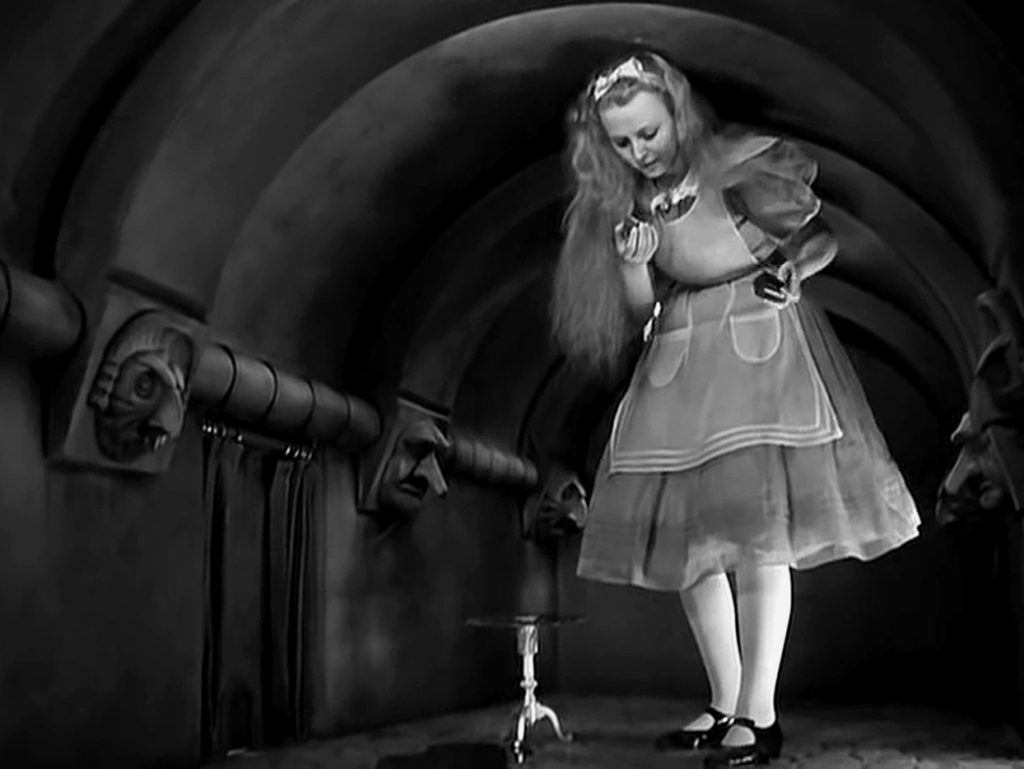
(And I’m aware that the story’s structure is faithful to Carrol’s story, but I can only engage with this movie as its own thing. The film’s faults may originate with the book, but that has nothing to do with how the filmmakers chose to adapt the material.)
Paramount’s lavish spending on Alice went beyond the cast. The special effects, particularly the compositing of characters of vastly different scale, are top-notch, as is the set design. The hallway where Alice has to get through the little door, with the leering gargoyle faces adorning the walls, or the strange perspective of the Mad Hatter’s table at the tea party show a strong influence from the German Expressionist films from just a few short years prior. The story of the Walrus and the Carpenter is animated by the Harman-Ising studio, and it’s a fine example of Hollywood animation from that era. Some of the creature puppets are likewise first rate, the Cheshire Cat being a notable standout.
But then there are the likes of the Duchess, or Messrs Dum and Dee, or the Griffon, or the Mock Turtle (poor Cary Grant!). The makeup and costuming are supposed to invoke the classic illustrations by John Tenniel, but they look melted and deformed. They look less like characters from ‘Wonderland’ and more like escapees from Tod Browning’s Freaks. I’m all for blending a little horror into a children’s tale- again, comparisons to The Wizard of Oz are apt- but I’m not sure these characters are intended to invoke such feelings of revulsion. It’s a major misstep in a movie with otherwise fantastic production values.
Kino Lorber’s new Blu-Ray release of Alice in Wonderland comes with a feature-length audio commentary by author and film historian Lee Gambin and the usual collection of theatrical trailers.


